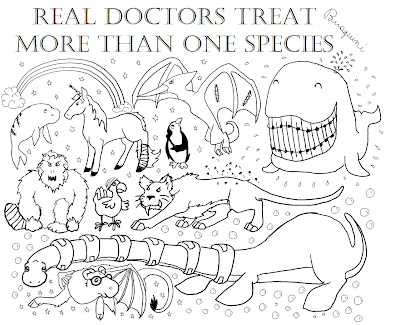
I suppose it's logical to include the very first life cycle I ever drew in the very first post I ever make, though I am rather embarrassed to post this ascarid life cycle at all. I thought about re-doing it for the sake of my reputation, but I decided to be lazy and allow my future posts to make up for the crumminess of this illustration.
How a Life Cycle is Born.
Instead of endlessly repeating infection details aloud to my horrified pets like usual, I decided to study by drawing out the parasite life cycles. I added some essential textual information and emailed the life cycle doodles/study-guides to my classmates on the off chance that one of them may benefit from the visual representation. I was surprised by the positive feedback I received. Eventually, our professor got wind of these doodles and requested that he use them in his presentations in the fall. Later, my
Haemonchus contortus life cycle received the honor of being posted in the
SAVMA Vet Gazette.
Disclaimer
So I'm making this blog 1) to disperse my awesome life-cycle-study-companions beyond the limits of my college, and 2) to prove the I am indeed the creator of the Parrsquini Life Cycles. (That is, if any of you punks try to steal my life cycles and pass them off as your own, may the blinding pain of the Fiery Serpent paralyze your distal appendages!)
Acknowledgments
Whether he knows it or not, Dr. Moorhead inspired me to spend a little more time on parasitology than on my other classes. He did a great job of piquing everyone's interest in parasitology. Thanks for being one of the (two) most energetic and inspiring professors of second year, Dr. Moorhead!












